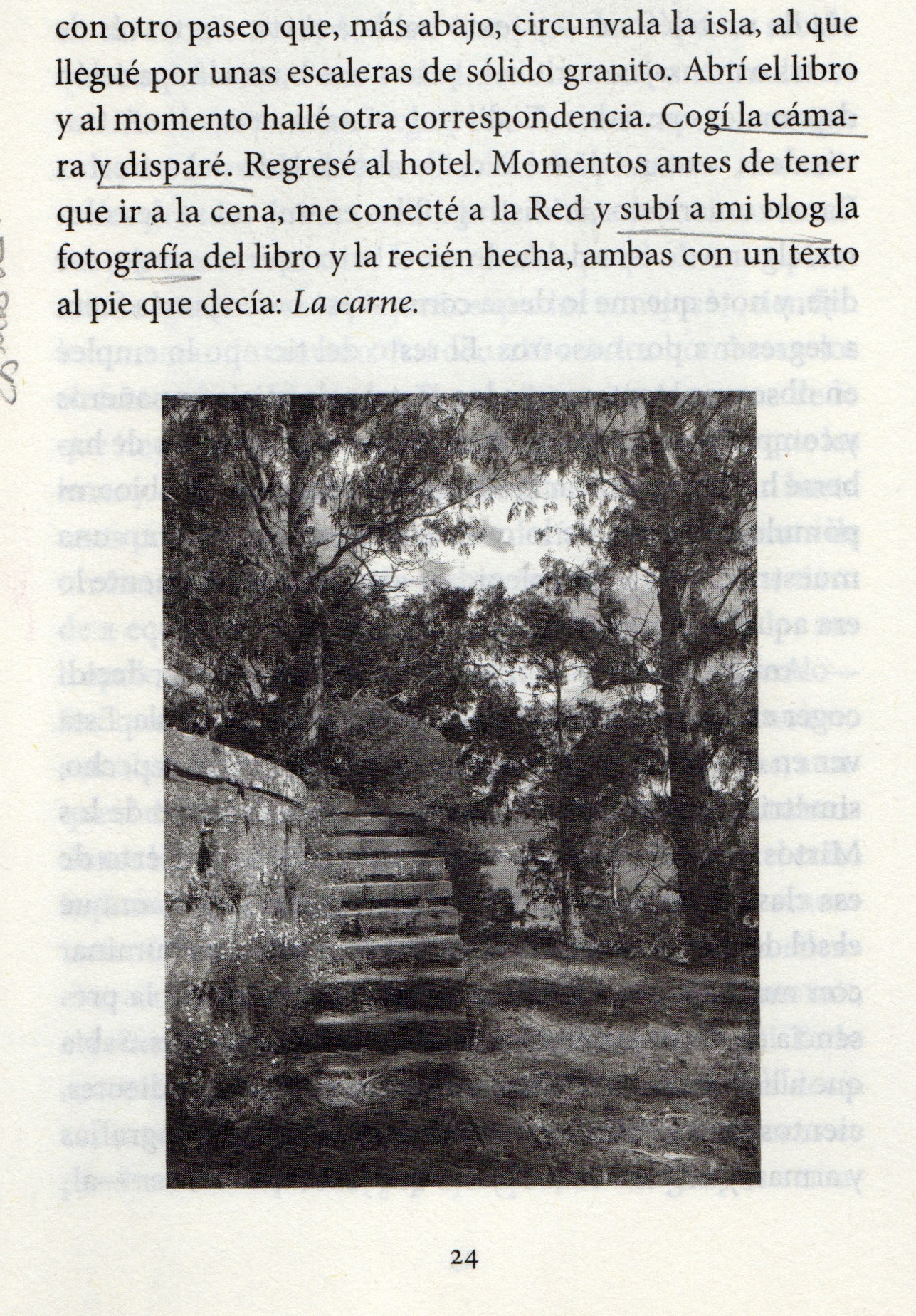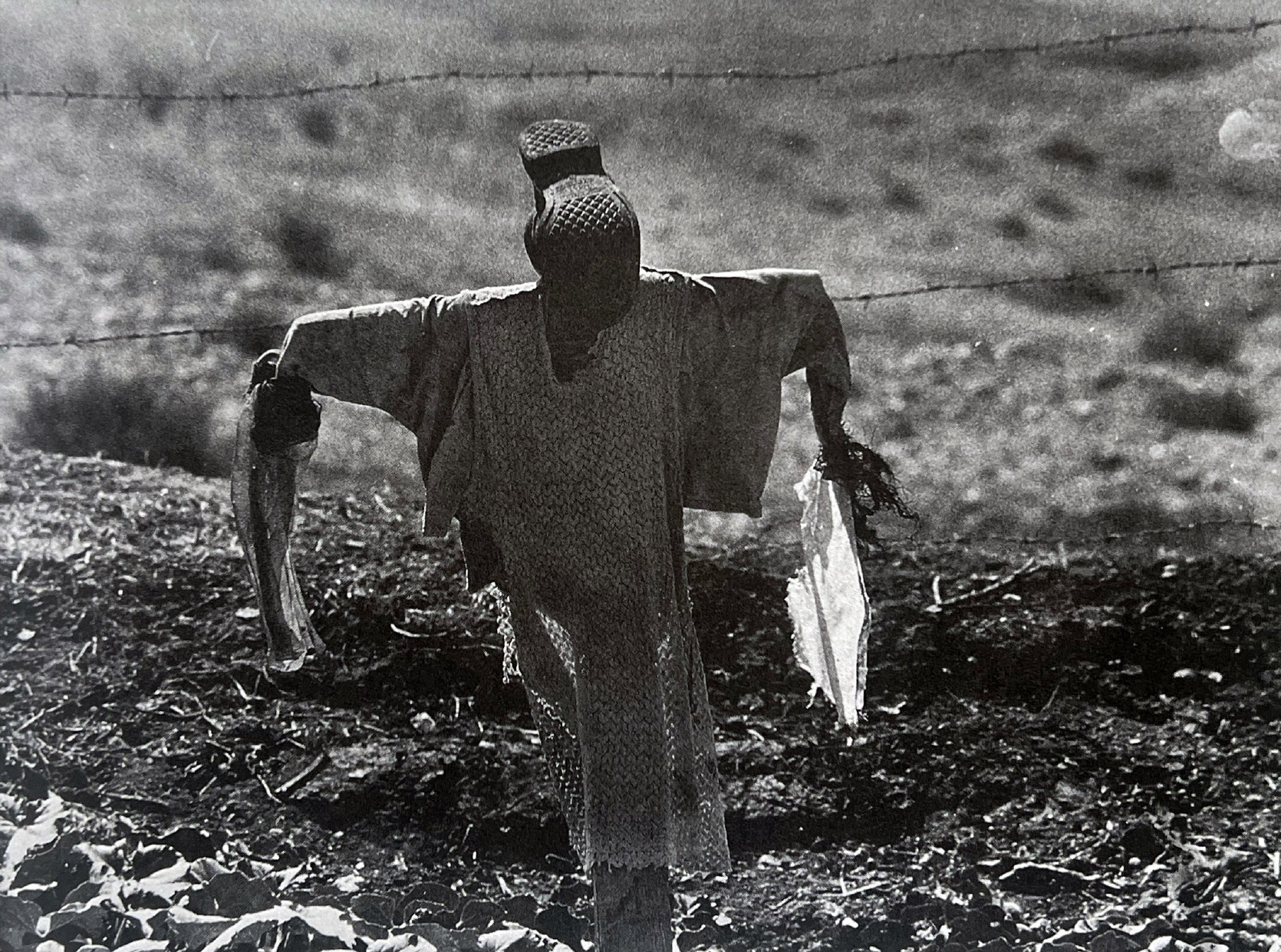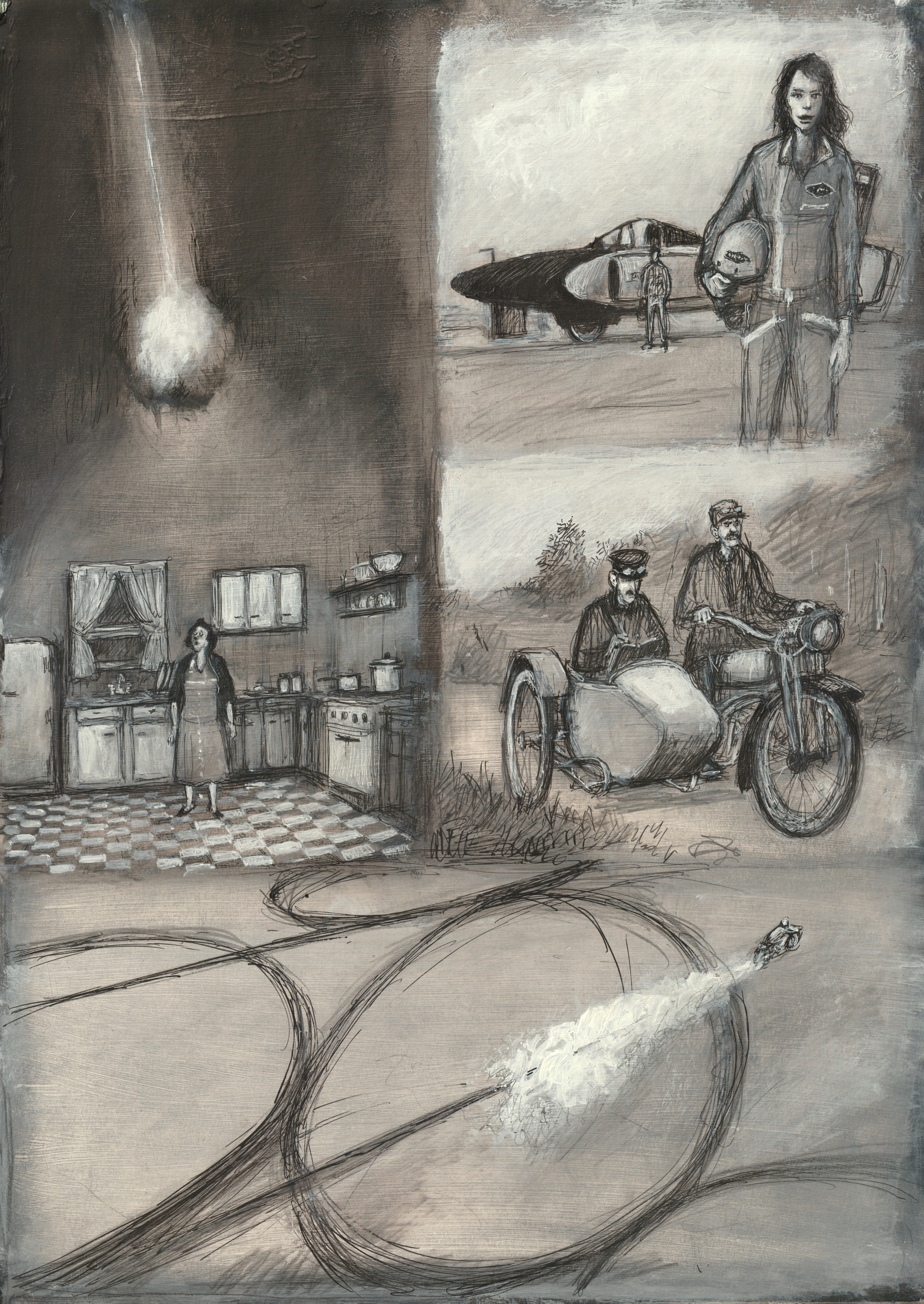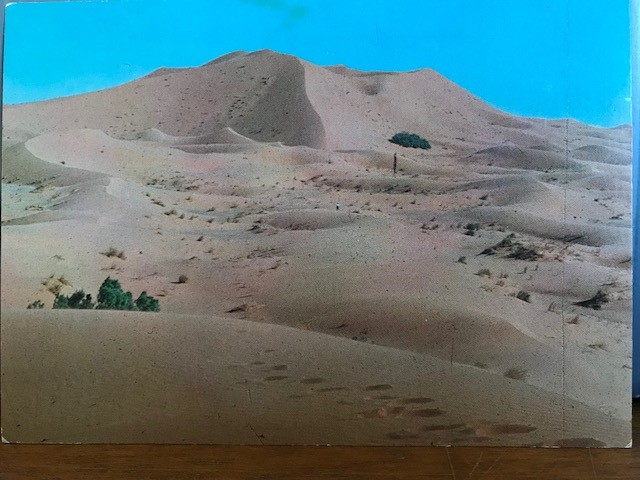

1Agustín Fernández Mallo (La Coruña, 1967) has committed himself to challenging contemporary literature’s boundaries since his debut novel Nocilla Dream (2006Fernández Mallo, Agustín. Nocilla dream, Editorial Candaya, 2006.). He achieves this by incorporating photography and other visual elements into his works and developing a distinctive appropriation poetics similar to Goldsmith’s “uncreative writing”. This approach pays homage to Borges in El hacedor (de Borges), Remake (2011Fernández Mallo, Agustín. El hacedor (de Borges), remake, Alfaguara, 2011.), which also featured an interactive digital version, as well as the enactment of artistic performances recorded in photographs or videos shared on social media and his blog El hombre que salió de la tarta. These multimedia elements enrich his diverse works of fiction and non-fiction. In one of his most recent novels, Trilogía de la guerra (2018Fernández Mallo, Agustín. Trilogía de la guerra, Seix Barral, 2018.) [The Things We’ve Seen (2021Fernández Mallo, Agustín. The Things We’ve Seen, traduit par Thomas Bunstead, Fitzcarraldo Editions, 2021.)], Fernández Mallo consolidates a practice already present in his oeuvre: the appropriation of images through a photographic gesture that responds to an image act, as conceptualised by Bredekamp (2021Bredekamp, Horst. Image Acts: A Systematic Approach to Visual Agency, 2nd edition, traduit par Elizabeth Clegg, De Gruyter, 2021.).
2This novel reflects on various themes, including the historical archive and collective memory of war, commencing with the narrator’s visit to San Simón Island in Galicia. During a conference on net-thinking, the narrator loses interest and explores Aillados, a historical investigation by journalists regarding the island’s use as a concentration camp by the Franco regime (Caeiro, González and de Saá, 1995Caeiro, Antonio, Juan A. González and Clara Ma de Saá. Aillados : A Memoria Dos Presos de 1936 Na Illa de San Simón, Ir Indo, 1995.). This transition from conference to archive deepens the connection with the photographs that the narrator later recreates using his mobile phone.
Three Archived Photographs, Three New Photographs
3Three of the archive pictures found in Aillados are reproduced in Trilogía de la guerra. Taken around 1937 during the Spanish Civil War by inmate and later politician Dámaso Carrasco Duaso, these images depict prisoners outside the prison. Despite a ban on photography, Carrasco, owing to his good relations with the guards, was allowed to document the site (Caeiro, González and de Saá, 1995, p. 243Caeiro, Antonio, Juan A. González and Clara Ma de Saá. Aillados : A Memoria Dos Presos de 1936 Na Illa de San Simón, Ir Indo, 1995.). Taken in the exteriors of the prison, all three depict prisoners in the sharp light of day. The first image shows a line of indistinguishable figures walking near the main building (caption in Aillados: “vellos fronte ò pavillón” [old men in front of the pavilion]). The second captures approximately 20 individuals posing against a backdrop of forest and courtyard; and the third features five men, including Carrasco, standing beside an anonymous structure, their faces visible and expressions incongruously cheerful despite their circumstances.
4Each archival photograph is paired in Trilogía with its contemporary equivalent. These enhanced images, captured from similar angles, reflect recognisable features of the original scenes. However, they lack human figures, emphasising changes brought about by time – larger trees and renovated buildings – while preserving the spatial essence of the original images.
Fictional Photographic Gesture
5The narrator of Trilogía initially perceives taking these photographs as merely a pastime. However, as he explores the island in search of these locations, the images of the Civil War resonate more profoundly. This intentional wandering drives the narrator to investigate the island, unveiling layers of its historical significance, including its role as a leper colony in the 19th century. His thorough exploration develops into a form of reflection articulated through what Flusser (2014Flusser, Vilém. Gestures, traduit par Nancy Ann Roth, University of Minnesota Press, 2014.) refers to as photographic gestures: a gesture of thinking shaped by positioning and framing through the camera’s viewfinder (2014, p. 82Flusser, Vilém. Gestures, traduit par Nancy Ann Roth, University of Minnesota Press, 2014.).
Assuming the role of photographer to recreate the image, the narrator begins to develop reflections in real time and later shares them on his blog and various social media platforms. While the first photograph prompts him to contemplate the invisible traces of historical trauma embedded in the spaces we inhabit, the second, posted on his blog alongside the archival photo and captioned “La desaparicion de la carne” (2018, p. 25Fernández Mallo, Agustín. Trilogía de la guerra, Seix Barral, 2018.) [“the disappearance of flesh”],
evokes thoughts of the prisoners’ executions, drawing parallels with Barthes’s ça-a-été and other interpretations of photography as memento mori. He subsequently describes these photographs as “imágenes que irrumpren con la fuerza de lo real” (2018, p. 34Fernández Mallo, Agustín. Trilogía de la guerra, Seix Barral, 2018.) [“images that
erupt with just as much force as if they were real” (2021, p. 35Fernández Mallo, Agustín. The Things We’ve Seen, traduit par Thomas Bunstead, Fitzcarraldo Editions, 2021.)]. This interplay between past and present, enhanced by photographic gestures, deepens the novel’s engagement with historiography and national narratives Les photographies d’un récit palestinien . The narrative explores how the past influences the present through acts of imaging while simultaneously allowing the present to reshape the past through reinterpretation. This dynamic unfolds through the photographic gesture. When the photograph is retaken, it acquires new meaning and exerts a deeper impact on the narrator, prompting a more profound historical reflection that resonates throughout the novel. How accurate are these archival photographs? In what ways do they influence us? What do they reveal about historiography, the construction of national narratives, and identities? Finally, how might they be appropriated, reinterpreted, and imbued with new meanings? “A Meditation on that Stilled Image”
. The narrative explores how the past influences the present through acts of imaging while simultaneously allowing the present to reshape the past through reinterpretation. This dynamic unfolds through the photographic gesture. When the photograph is retaken, it acquires new meaning and exerts a deeper impact on the narrator, prompting a more profound historical reflection that resonates throughout the novel. How accurate are these archival photographs? In what ways do they influence us? What do they reveal about historiography, the construction of national narratives, and identities? Finally, how might they be appropriated, reinterpreted, and imbued with new meanings? “A Meditation on that Stilled Image”
The Photographic Gesture as an Image Act for Writing
6The complex structure and multiple narrators of Trilogía de la guerra prevent it from being categorised as autofiction. However, the initial narrator closely mirrors Fernández Mallo’s own experiences on San Simón Island in 2013. Like the narrator, Mallo attended a conference, explored the island, and recreated photographs from Aillados. His blog posts from this period document his reflections and reinterpretations through photographic gestures, including images not featured in the novel, such as an aerial view of the island from an aeroplane (2013Fernández Mallo, Agustín. Isla de San Simón (la carne), El hombre que salió de la tarta, April 2013. https://fernandezmallo.megustaleer.com/2013/04/26/isla-de-san-simon-la-carne/.).
7This action, which took place before the novel was written, suggests that Mallo did not go on a research trip to collect photographic material for his fiction. Instead, as the narrator, he was influenced by the historical photographs; more specifically, these photographs had a profound impact on him. According to Bredekamp’s concept of the image act, this process transcends mere fascination or the later development into ekphrasis or reproduction, as typically seen in literature. Rather, it involves a necessity to recreate the photograph and contemplate it through that gesture of appropriation Déboîter l’image . Only after this gesture is completed can writing occur.
. Only after this gesture is completed can writing occur.
References
- Bredekamp, Horst. Image Acts: A Systematic Approach to Visual Agency, 2nd edition, traduit par Elizabeth Clegg, De Gruyter, 2021.
- Caeiro, Antonio, Juan A. González and Clara Ma de Saá. Aillados : A Memoria Dos Presos de 1936 Na Illa de San Simón, Ir Indo, 1995.
- Fernández Mallo, Agustín. El hacedor (de Borges), remake, Alfaguara, 2011.
- Fernández Mallo, Agustín. El hombre que salió de la tarta. https://fernandezmallo.megustaleer.com/.
- Fernández Mallo, Agustín. Isla de San Simón (la carne), El hombre que salió de la tarta, April 2013. https://fernandezmallo.megustaleer.com/2013/04/26/isla-de-san-simon-la-carne/.
- Fernández Mallo, Agustín. Nocilla dream, Editorial Candaya, 2006.
- Fernández Mallo, Agustín. The Things We’ve Seen, traduit par Thomas Bunstead, Fitzcarraldo Editions, 2021.
- Fernández Mallo, Agustín. Trilogía de la guerra, Seix Barral, 2018.
- Flusser, Vilém. Gestures, traduit par Nancy Ann Roth, University of Minnesota Press, 2014.